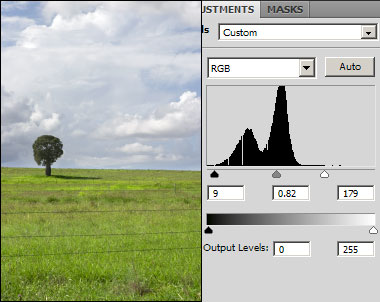Mastering Precision: An Extensive Guide to Creating Masks for Precise Adjustments in DaVinci Resolve

Introduction:
Masks are indispensable tools in the arsenal of every colorist, providing precise control over selective adjustments in footage. In DaVinci Resolve, masks enable users to isolate specific regions or elements within the frame and apply targeted adjustments to enhance exposure, color balance, and visual impact. In this extensive guide, we’ll delve deep into the art of creating masks in DaVinci Resolve, providing you with the knowledge and techniques to master this essential aspect of color grading.
Understanding Masks:
Masks in DaVinci Resolve are shape-based or gradient-based overlays that define specific areas or regions within the frame for selective adjustments. By creating masks, users can isolate objects, people, or elements within the frame and apply adjustments only to those areas while leaving the rest of the image unaffected. Masks can be used for various purposes, including exposure adjustments, color corrections, and visual effects.
Types of Masks:
- Shape Masks:
- Shape masks are geometric overlays, such as rectangles, circles, or custom shapes, that define specific areas within the frame for selective adjustments. Users can draw, adjust, and manipulate shape masks to isolate objects or regions with precision.
- Gradient Masks:
- Gradient masks are linear or radial overlays that create smooth transitions between the masked and unmasked areas within the frame. Users can adjust the position, angle, and size of gradient masks to control the falloff of the masked adjustments.
Using Masks in DaVinci Resolve:
Let’s explore the step-by-step process of creating masks in DaVinci Resolve for precise adjustments:
- Open the Color Page:
- Launch DaVinci Resolve and open your project. Navigate to the Color page by clicking on the Color tab at the bottom of the interface. This will bring up the Color page, where you can access the color grading tools, including masks.
- Load Your Footage:
- Import your footage into the Media Pool by clicking on the Media Pool tab and dragging your clips into the bin. Then, drag your desired clip onto the timeline to begin color grading.
- Access the Masks Panel:
- With your clip selected on the timeline, navigate to the Masks panel located on the right side of the interface. Here, you’ll find options to create and manipulate masks for selective adjustments.
- Create a Shape Mask:
- Click on the desired shape tool (rectangle, ellipse, or freehand) in the Masks panel to activate it. Then, click and drag on the viewer window to define the shape and size of the mask.
- For the freehand tool, you can click and drag to draw custom shapes or outlines within the frame, allowing for precise masking around objects or elements.
- Adjust the Shape Mask:
- Once the shape mask is created, use the on-screen controls to adjust its position, size, rotation, and feathering to precisely define the masked area within the frame.
- Fine-tune the shape and position of the mask until it encapsulates the desired region that you want to adjust.
- Apply Adjustments:
- With the shape mask selected, navigate to the color grading controls, such as Color Wheels or Curves, to apply adjustments to the masked area. Make adjustments to parameters such as exposure, color balance, saturation, and contrast to achieve the desired look.
- Create Additional Masks (Optional):
- If needed, create additional masks using the same process to isolate and adjust other areas within the frame. You can create multiple shape masks to target different objects or elements separately for precise adjustments.
- Fine-Tune as Needed:
- Continue to fine-tune the masks and adjustments as needed to achieve the desired result. Experiment with different masking techniques, such as combining shape masks with gradient masks, to achieve complex or nuanced adjustments.
- Save and Export:
- Once you’re satisfied with the masked adjustments, save your project and export your footage to your desired format for further editing or distribution. DaVinci Resolve will apply the masked adjustments to the exported footage, ensuring consistency in the final output.
Best Practices for Creating Masks:
To optimize your workflow and achieve professional-grade results when creating masks in DaVinci Resolve, consider the following best practices:
- Plan Your Masks:
- Before creating masks, plan your approach and define clear objectives for the selective adjustments you want to make. Identify specific areas or elements within the frame that require masking and plan your masking strategy accordingly.
- Use Multiple Masks:
- For complex adjustments involving multiple regions within the frame, consider using multiple masks to isolate and target different areas separately. This allows for greater precision and control over the selective adjustments.
- Pay Attention to Feathering:
- Pay attention to the feathering settings when creating masks to ensure smooth and seamless transitions between the masked and unmasked areas. Adjust the feathering parameters to blend the edges of the mask with the surrounding areas for natural-looking results.
- Experiment with Opacity:
- Experiment with the opacity settings of masks to control the strength of the masked adjustments. Adjusting the opacity allows you to dial in the intensity of the adjustments and fine-tune their impact on the masked areas.
- Refine with Tracking:
- Take advantage of DaVinci Resolve’s tracking capabilities to automate the process of following moving objects or elements within the frame with masks. Use the tracker tool to analyze motion and adjust the position and size of masks dynamically.
Conclusion:
Masks are powerful tools for achieving precise adjustments in DaVinci Resolve. By creating shape-based or gradient-based masks, users can isolate specific regions or elements within the frame and apply targeted adjustments to enhance exposure, color balance, and visual impact. Whether you’re working on a narrative film, documentary, commercial, or music video, mastering the art of creating masks is essential for achieving professional-grade results and realizing your creative vision in DaVinci Resolve. Experiment with different masking techniques, fine-tune your adjustments, and unlock the full potential of masks to elevate your color grading skills to new heights.




